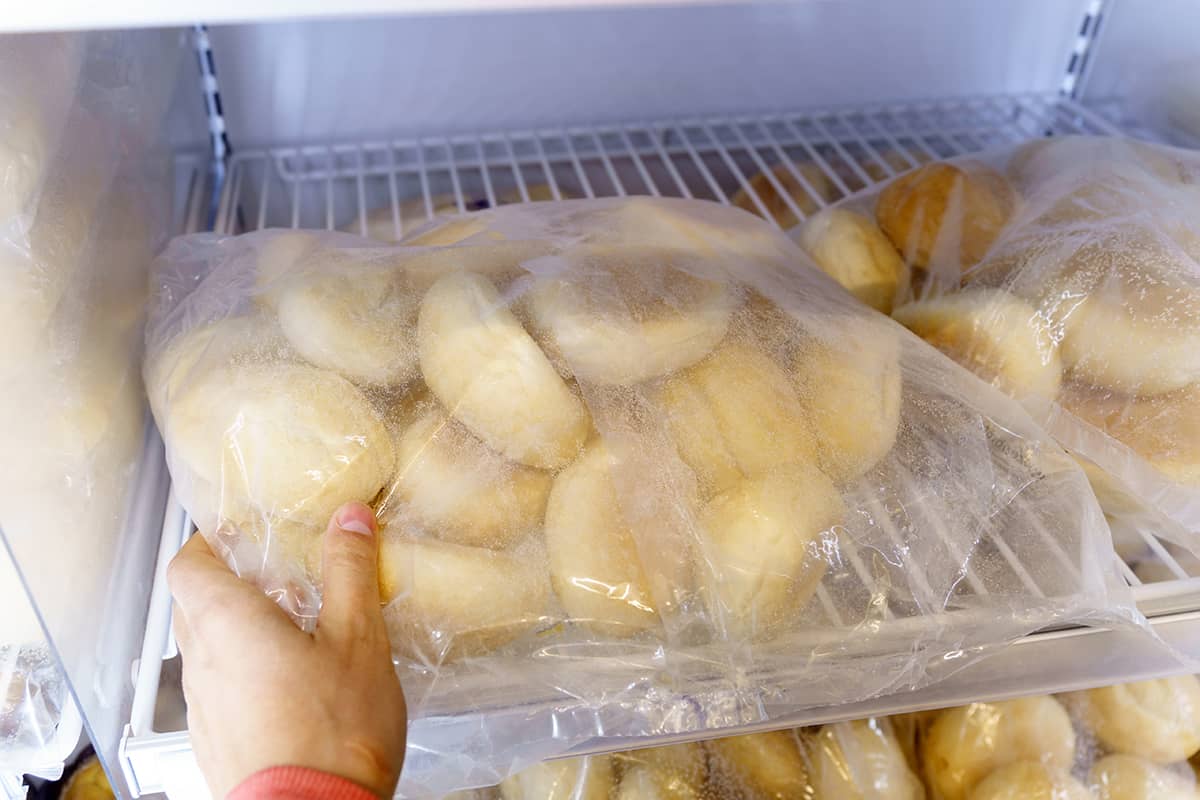

Articles
How To Defrost Bread From Freezer
Modified: February 29, 2024
Learn the best methods to defrost bread from the freezer with these informative articles. Safely enjoy your favorite loaf with our step-by-step guides and tips.
(Many of the links in this article redirect to a specific reviewed product. Your purchase of these products through affiliate links helps to generate commission for Storables.com, at no extra cost. Learn more)
Introduction
When it comes to enjoying fresh bread, there’s nothing quite like the aroma and taste of a perfectly baked loaf. However, sometimes life gets busy, and we find ourselves with leftover bread that needs to be stored for later use. Freezing bread is a convenient way to preserve its freshness and ensure that it can be enjoyed at a later time.
While freezing bread is a simple task, defrosting it properly is essential to maintain its quality and texture. Improper thawing can lead to a loss of moisture or uneven defrosting, resulting in a dry and unappetizing loaf. In this article, we will explore the importance of proper bread defrosting and share recommended methods for thawing bread from the freezer.
By following these methods, you can enjoy a freshly defrosted loaf of bread that tastes just as good as the day it was baked.
Key Takeaways:
- Properly defrosting bread is crucial to maintain its quality, texture, and taste. Experiment with different methods like room temperature, oven, microwave, or toaster to find your preferred way of enjoying freshly defrosted bread.
- Plan ahead, avoid repeated freezing and thawing, and use proper packaging to preserve the freshness of your bread. Whether you choose room temperature, oven, microwave, or toaster, each method offers its own advantages and considerations for a delightful defrosting experience.
Read more: When To Defrost A Freezer
Understanding the Importance of Proper Bread Defrosting
Properly defrosting bread is crucial to maintain its quality and ensure a pleasant eating experience. When bread is frozen and stored for an extended period, it undergoes physical changes that can affect its texture and taste. These changes can be exacerbated if the bread is not thawed correctly.
One of the main challenges of defrosting bread is preventing it from becoming dry and stale. Bread contains moisture, and when it is frozen, the water molecules form ice crystals. These ice crystals can damage the bread’s structure, leading to a loss of moisture when it thaws. If the bread is not defrosted properly, the moisture loss can result in a dry, crumbly texture.
Another issue with improper bread defrosting is uneven thawing. When bread is taken directly from the freezer and exposed to room temperature, the exterior thaws faster than the interior. This can lead to a partially thawed and mushy center, while the crust becomes dry and tough. Achieving an even thaw ensures that the bread maintains its desired texture throughout.
Furthermore, if bread is defrosted and then refrozen multiple times, it can undergo quality degradation. Each freeze-thaw cycle can affect the bread’s texture, taste, and overall freshness. To preserve the quality and flavor of the bread, it is best to defrost it once and consume it soon after.
Properly defrosting bread ensures that it retains its moisture, texture, and flavors. By using the right defrosting methods, you can enjoy a defrosted loaf that tastes just like fresh bread. In the next section, we will explore recommended methods for thawing bread from the freezer.
Recommended Methods for Defrosting Bread from the Freezer
When it comes to defrosting bread from the freezer, there are a few methods you can use depending on your preferences and available time. Each method offers its own advantages and considerations, so choose the one that suits you best.
Method 1: Defrosting Bread at Room Temperature
This method is the simplest and requires minimal effort. To defrost bread at room temperature, remove the loaf from the freezer and place it on a clean countertop or cutting board. Make sure to leave it in its packaging or wrap it loosely with aluminum foil or a clean kitchen towel to prevent it from drying out.
Allow the bread to thaw naturally at room temperature. The time it takes will depend on the size and type of bread, but it typically takes a few hours. Larger loaves may take longer to fully thaw. Once the bread is defrosted, you can slice it, toast it, or use it as desired.
Method 2: Defrosting Bread in the Oven
If you prefer warm, slightly toasted bread, using the oven for defrosting is a great option. Preheat your oven to a low temperature, around 300°F (150°C). Take the frozen bread out of its packaging and place it on a baking sheet. This method works best for unsliced bread or baguettes.
Place the baking sheet with the bread in the preheated oven for about 10-15 minutes. Keep an eye on the bread to ensure it does not become too crisp or toasted. Once the bread is soft and thawed, remove it from the oven and let it cool slightly before slicing or serving.
Read more: How To Defrost A Samsung Freezer
Method 3: Defrosting Bread in the Microwave
For those in need of a quick defrosting method, the microwave can come to the rescue. However, be cautious as microwaving bread can easily result in a rubbery or dry texture if not done correctly.
To defrost bread in the microwave, place the loaf on a microwave-safe plate and cover it loosely with a damp paper towel. Microwave the bread on a low power setting or using the defrost function for 1 minute intervals. Check the bread after each interval to ensure it thaws evenly. Avoid using a high power setting, as it may cause the bread to become tough or overcooked.
Method 4: Defrosting Bread in the Toaster or Toaster Oven
This method is ideal if you prefer to have warm, crispy slices of bread. Start by slicing the frozen bread into individual portions that will fit in your toaster or toaster oven. Place the slices directly into the toaster or toaster oven and toast them on a low setting. This method allows for quick defrosting and toasting at the same time.
Keep an eye on the slices to ensure they do not become overly toasted. Once the bread is thawed and toasted to your desired level, carefully remove it from the toaster or toaster oven and let it cool slightly before serving.
Whichever method you choose, ensure that the bread has thawed completely before slicing or using it in recipes. By following these recommended methods for defrosting bread from the freezer, you can enjoy delicious and fresh-tasting bread whenever you need it.
Method 1: Defrosting Bread at Room Temperature
Defrosting bread at room temperature is a simple and convenient method that requires minimal effort. It is best suited for those who have the time to wait for the bread to thaw naturally without the use of any additional tools or appliances.
To begin, remove the loaf of bread from the freezer and place it on a clean countertop or cutting board. It is important to keep the bread in its packaging or loosely wrap it with aluminum foil or a clean kitchen towel to prevent it from drying out during the thawing process.
Allow the bread to sit at room temperature and thaw naturally. The time it takes for the bread to defrost will vary depending on the size and type of the loaf. Smaller rolls or slices may only take an hour or so to thaw, while larger loaves can take several hours.
It is crucial to note that the ambient temperature of the room will also impact the defrosting time. Warmer rooms will facilitate a faster thaw, while cooler rooms will slow down the process. If you are in a hurry, placing the bread near a source of gentle heat, like a warm oven or a sunny spot, can help speed up the thawing process.
Once the bread is fully defrosted, it is ready to be enjoyed. You can slice it, toast it, or use it as desired for sandwiches, toast, or any other culinary creation.
It is essential to mention that once the bread has been defrosted, it should not be refrozen. Freezing bread after it has been defrosted can compromise its quality and lead to changes in texture and taste. It is best to defrost only the amount of bread that you intend to consume at one time.
Defrosting bread at room temperature is a convenient method that allows the bread to thaw naturally and maintain its moisture and texture. This method is ideal for those who appreciate the simplicity of letting time do the work and enjoy the anticipation of savoring freshly defrosted bread.
Method 2: Defrosting Bread in the Oven
If you prefer warm, slightly toasted bread with a crispy crust, defrosting bread in the oven is an excellent method to consider. This method is ideal for unsliced bread or baguettes and provides a quick and effective way to thaw your frozen loaf.
To begin, preheat your oven to a low temperature, around 300°F (150°C). While the oven is heating, take the frozen bread out of its packaging and place it directly on a baking sheet. It’s important to avoid overcrowding the bread to ensure even defrosting.
Once the oven is preheated, place the baking sheet with the bread inside and let it thaw for about 10-15 minutes. Keep a close eye on the bread as it thaws to prevent it from becoming too crisp or toasted. You want the bread to become soft and pliable, not crispy.
As the bread thaws in the warm oven, the gentle heat helps to evaporate the ice crystals, thus restoring the bread’s moisture. The low temperature ensures that the crust does not become overly toasted or hardened.
Once the bread is soft and fully defrosted, carefully remove it from the oven and let it cool slightly before slicing or serving. This brief resting period allows the bread to evenly distribute its internal warmth and develop a more pleasant texture.
Defrosting bread in the oven is a quick and efficient method that provides you with a warm and slightly toasted loaf. This method enhances the natural flavors of the bread and creates a delightful contrast between the soft interior and crispy crust.
It’s important to remember that once the bread has been defrosted and partially toasted in the oven, it’s best to consume it within a few hours. While the bread will remain edible for a bit longer, it may start to lose its freshness and optimal taste.
Whether you’re enjoying a simple slice of warm bread or using it for sandwiches or bruschetta, defrosting bread in the oven adds an extra layer of flavor and texture that will elevate your culinary experience.
Read more: How To Defrost A Chest Freezer
Method 3: Defrosting Bread in the Microwave
For those in need of a quick defrosting method, using the microwave is a convenient option to consider. However, it’s important to approach this method with caution, as microwaving bread can easily result in a rubbery or dry texture if not done correctly.
To begin, place the frozen bread on a microwave-safe plate and cover it loosely with a damp paper towel. The dampness of the paper towel helps to create a moist environment around the bread, preventing it from becoming too dry during the defrosting process.
Next, set your microwave to a low power setting or use the defrost function, if available. Start by microwaving the bread for 30 seconds to 1 minute, depending on the size and thickness of the loaf. Avoid using a high power setting, as this can lead to uneven heating and undesirable results.
After the initial heating, check the bread to gauge its progress. You want the bread to thaw evenly without becoming overly hot or cooked. If the bread is still partially frozen, repeat the process in 30-second intervals until it is fully defrosted.
It’s essential to pay close attention while microwaving the bread to prevent it from becoming tough or dry. Overheating the bread can cause the moisture to evaporate, resulting in a less enjoyable texture.
Once the bread is defrosted, remove it from the microwave and let it rest for a few minutes before slicing or serving. Allowing the bread to rest helps to even out the temperature and achieve a more pleasant texture throughout.
It’s important to note that microwave defrosting is best suited for sliced bread or individual portions. Larger loaves may not defrost as evenly in the microwave due to the varying thickness and density.
While using the microwave for bread defrosting is a time-saving option, it’s recommended to consume the defrosted bread immediately. The texture and taste of microwaved bread may start to degrade after a few hours, so it’s best to enjoy it while it’s fresh.
By following the proper techniques and paying attention to the defrosting time, you can successfully use the microwave to defrost bread quickly when time is of the essence.
Method 4: Defrosting Bread in the Toaster or Toaster Oven
If you prefer your bread warm and crispy, defrosting bread in the toaster or toaster oven is a great option. This method is especially convenient for sliced bread or individual portions that can fit into the toaster or toaster oven.
To begin, start by slicing the frozen bread into individual portions that will fit into your toaster or toaster oven. Ensure that the slices are not too thick, as they may take longer to defrost and toast evenly.
Next, place the slices of frozen bread directly into the toaster or toaster oven slots. Set the toaster or toaster oven to a low to medium setting, as you want to defrost the bread without burning or over-toasting it.
Start the toasting process and allow the bread to defrost and warm up gradually. Keep a close eye on the slices to prevent them from becoming overly toasted. You want the bread to be heated all the way through, but still soft and pliable.
Once the bread is defrosted and toasted to your desired level, carefully remove it from the toaster or toaster oven. Let the slices cool slightly before handling or consuming. This brief resting period helps to ensure that the heat is evenly distributed, resulting in a more enjoyable eating experience.
Defrosting bread in the toaster or toaster oven is a quick and effective method, as it combines defrosting and toasting in one step. It’s a great option for those who prefer their bread with a warm and crispy texture.
Remember that once the bread is defrosted and lightly toasted, it’s best to consume it within a few hours to fully enjoy its freshness and optimal taste.
Whether you’re making toast, preparing sandwiches, or enjoying bread with toppings, defrosting bread in the toaster or toaster oven provides a convenient way to enjoy warm and crispy slices in no time.
Tips and Precautions for Defrosting Bread
Defrosting bread may seem like a straightforward process, but there are a few tips and precautions to keep in mind to ensure the best results. By following these guidelines, you can maintain the quality, texture, and taste of your bread when thawing it from the freezer.
1. Plan Ahead:
When you know you’ll need bread in the future, take it out of the freezer and allow it to defrost in the refrigerator overnight. This slow thawing process helps to retain the bread’s moisture and prevents its texture from becoming compromised. Having bread ready for use will save you time in the morning or when you’re preparing meals.
Read more: How Long To Defrost A Freezer
2. Avoid Repeated Freezing and Thawing:
Once you have defrosted bread, avoid refreezing it if possible. Repeated freezing and thawing can lead to a loss of moisture and quality degradation. If you have more bread than you can consume at once, consider slicing and packaging it in smaller portions to defrost as needed.
3. Use Proper Packaging:
When storing bread in the freezer, ensure it is properly wrapped or packaged to prevent freezer burn. Use airtight containers, plastic bags, or aluminum foil to keep moisture from escaping and freezer odors from permeating the bread. This will help maintain its freshness and flavor when it comes time to thaw and enjoy it.
4. Slice Before Freezing:
If you prefer sliced bread, consider slicing it before freezing. This makes it easier to defrost individual slices or portions as needed, without having to thaw the entire loaf. Place wax paper or parchment paper between the slices to prevent them from sticking together, maximizing convenience and reducing waste.
5. Store Different Types of Bread Separately:
If you have different types of bread, such as wheat, white, or artisanal loaves, it’s best to store them separately in the freezer. This prevents cross-contamination of flavors, ensuring that each type of bread maintains its distinct taste when defrosted.
Read more: How To Defrost Frigidaire Freezer
6. Experiment with Different Defrosting Methods:
Try different defrosting methods to find the one that works best for you. Whether it’s defrosting at room temperature, using the oven, microwave, or toaster, each method has its advantages. Experimenting allows you to discover your preferred way of defrosting bread based on your time constraints and desired texture.
7. Consider Reheating Techniques:
If you find that your defrosted bread has turned slightly stale or lost some moisture, consider reheating it briefly. Toasting or lightly warming the bread in the oven can help restore some of its freshness and improve its taste.
By following these tips and precautions, you can ensure that your defrosted bread remains delicious and maintains its quality. Whether you’re enjoying a simple slice of toast or using the bread in a more elaborate recipe, proper defrosting techniques will allow you to fully savor the flavors and textures of your bread.
Conclusion
Properly defrosting bread from the freezer is essential to maintain its quality, texture, and taste. By using the recommended methods and following a few simple tips, you can enjoy freshly defrosted bread that rivals the flavor and aroma of a freshly baked loaf.
Whether you choose to defrost bread at room temperature, in the oven, the microwave, or the toaster, each method offers its own advantages and considerations. Defrosting bread at room temperature is a simple and low-effort option that allows the bread to naturally thaw without any additional tools or appliances. On the other hand, using the oven provides a warm and slightly toasted outcome, while the microwave and toaster offer quick and convenient defrosting options.
Regardless of the method chosen, it’s important to plan ahead, avoiding repeated freezing and thawing to maintain the bread’s freshness. Properly packaging the bread before freezing and storing different types of bread separately also helps to preserve their individual flavors.
Remember to experiment and find the method that suits your preferences and time constraints best. While defrosting bread may seem like a simple task, each method can make a difference in the overall taste and texture of the bread.
By taking these precautions and following the recommended methods, you can confidently defrost bread from the freezer, knowing that it will retain its moisture, texture, and flavors. So, the next time you find yourself with frozen bread, defrost it with care and enjoy the pleasure of a freshly defrosted loaf.
Happy defrosting and happy bread-eating!
Frequently Asked Questions about How To Defrost Bread From Freezer
Was this page helpful?
At Storables.com, we guarantee accurate and reliable information. Our content, validated by Expert Board Contributors, is crafted following stringent Editorial Policies. We're committed to providing you with well-researched, expert-backed insights for all your informational needs.
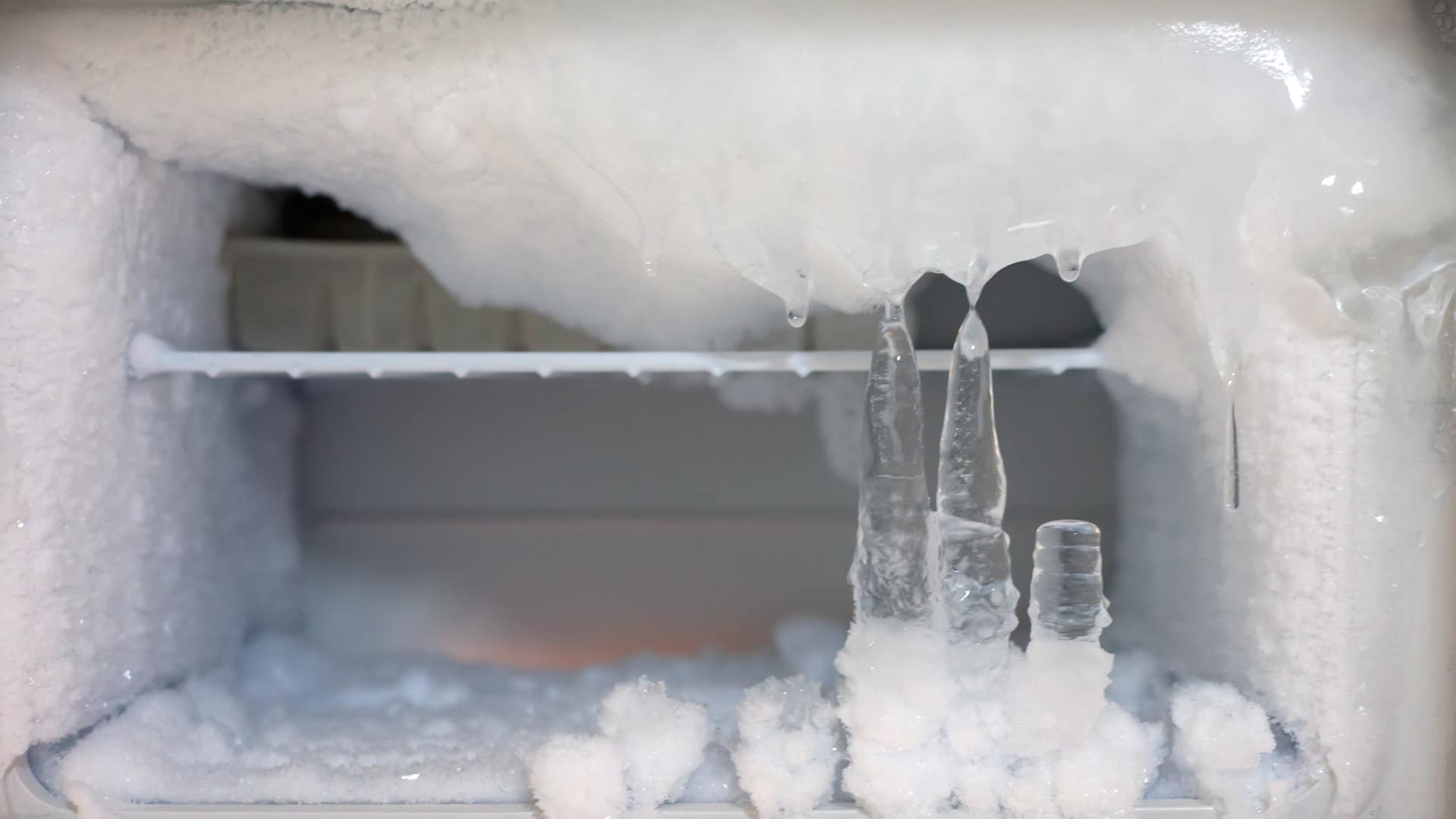
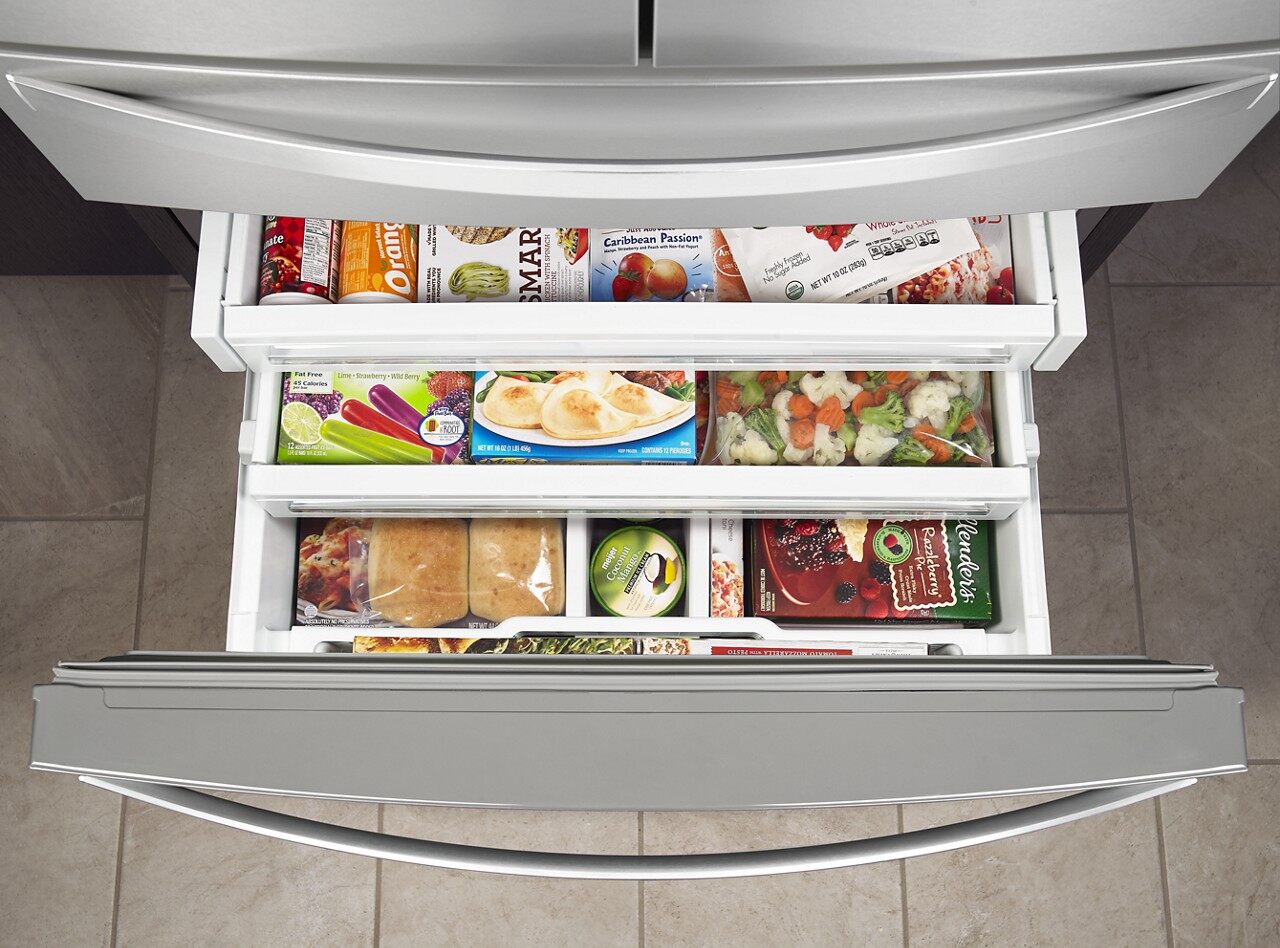
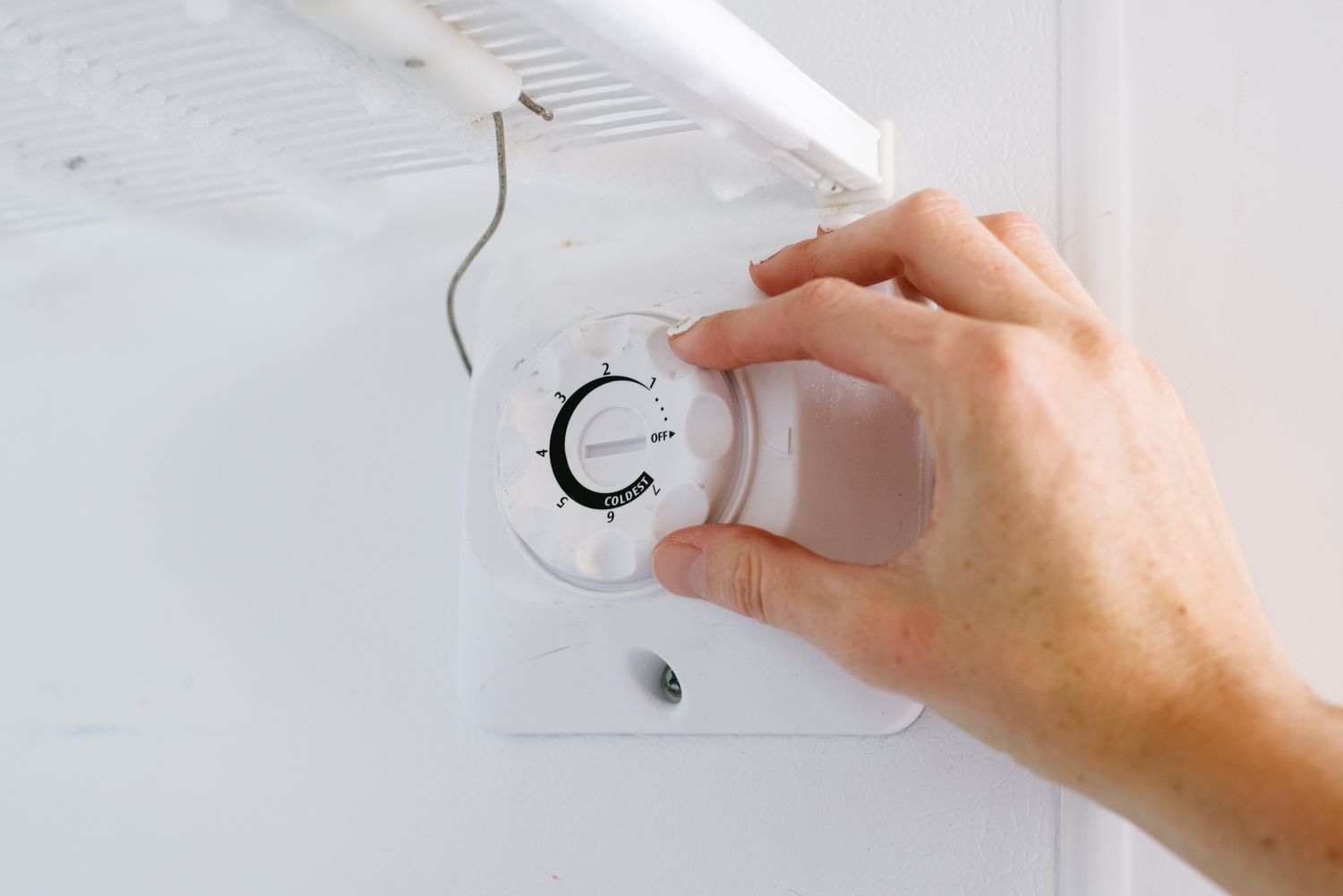
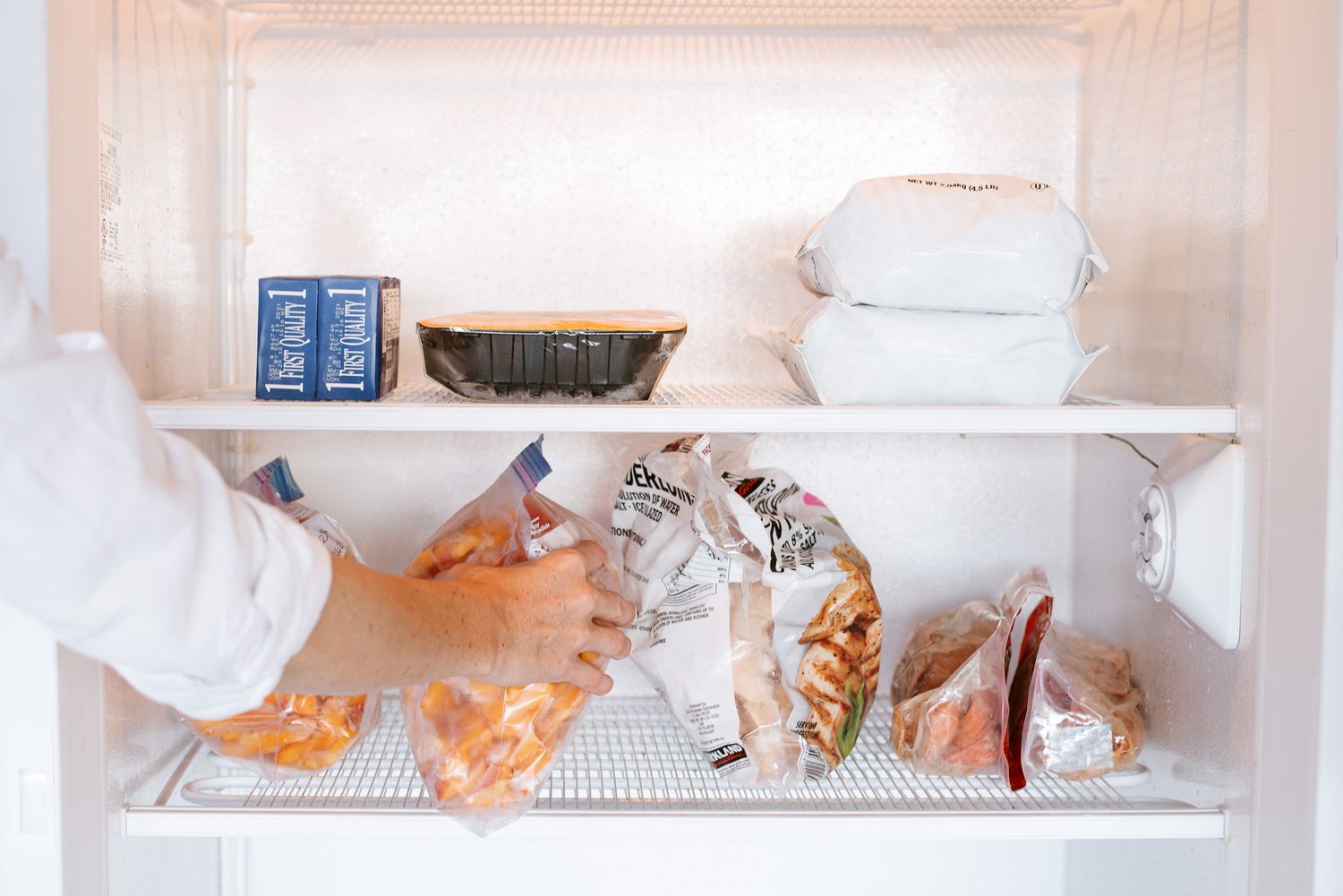

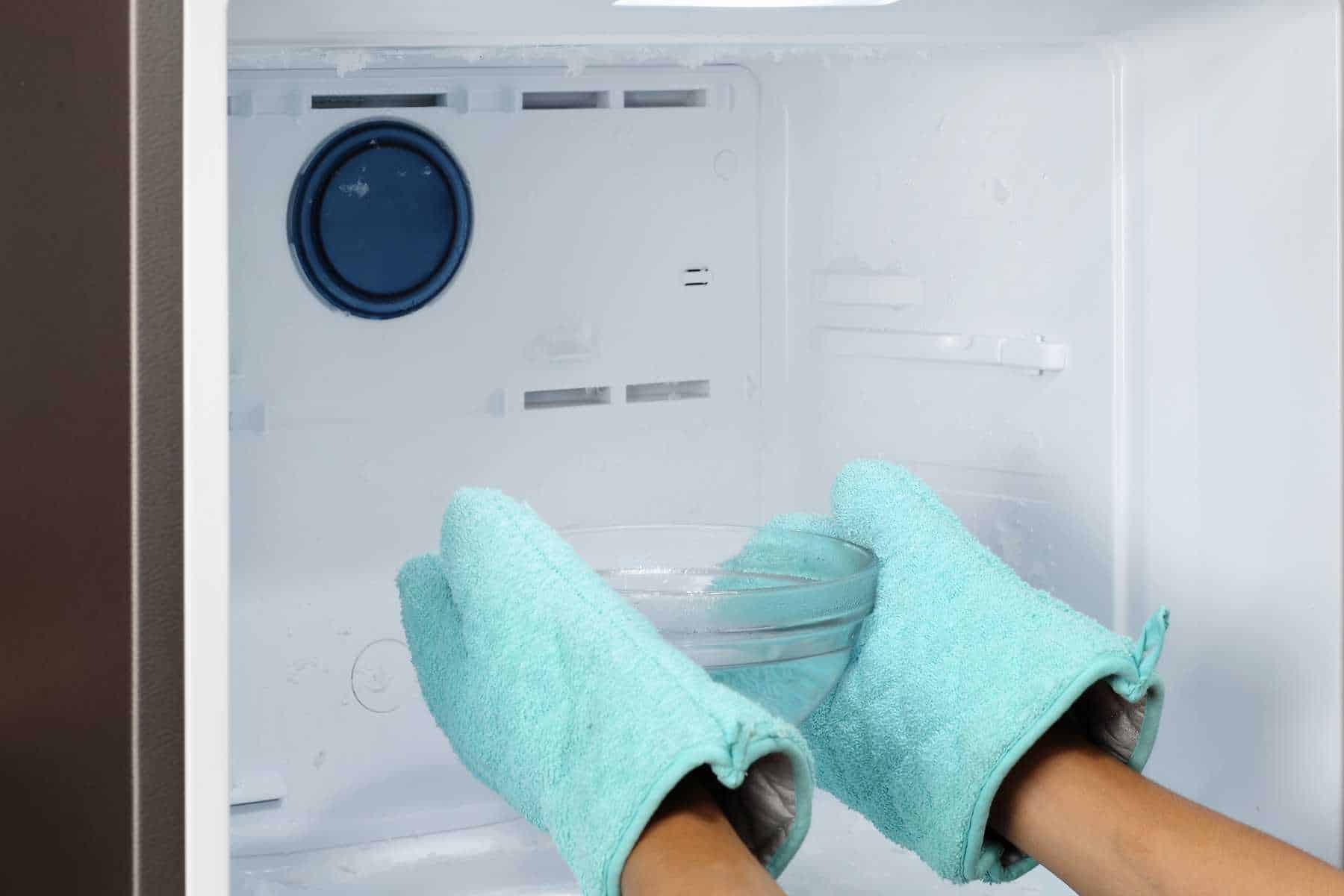
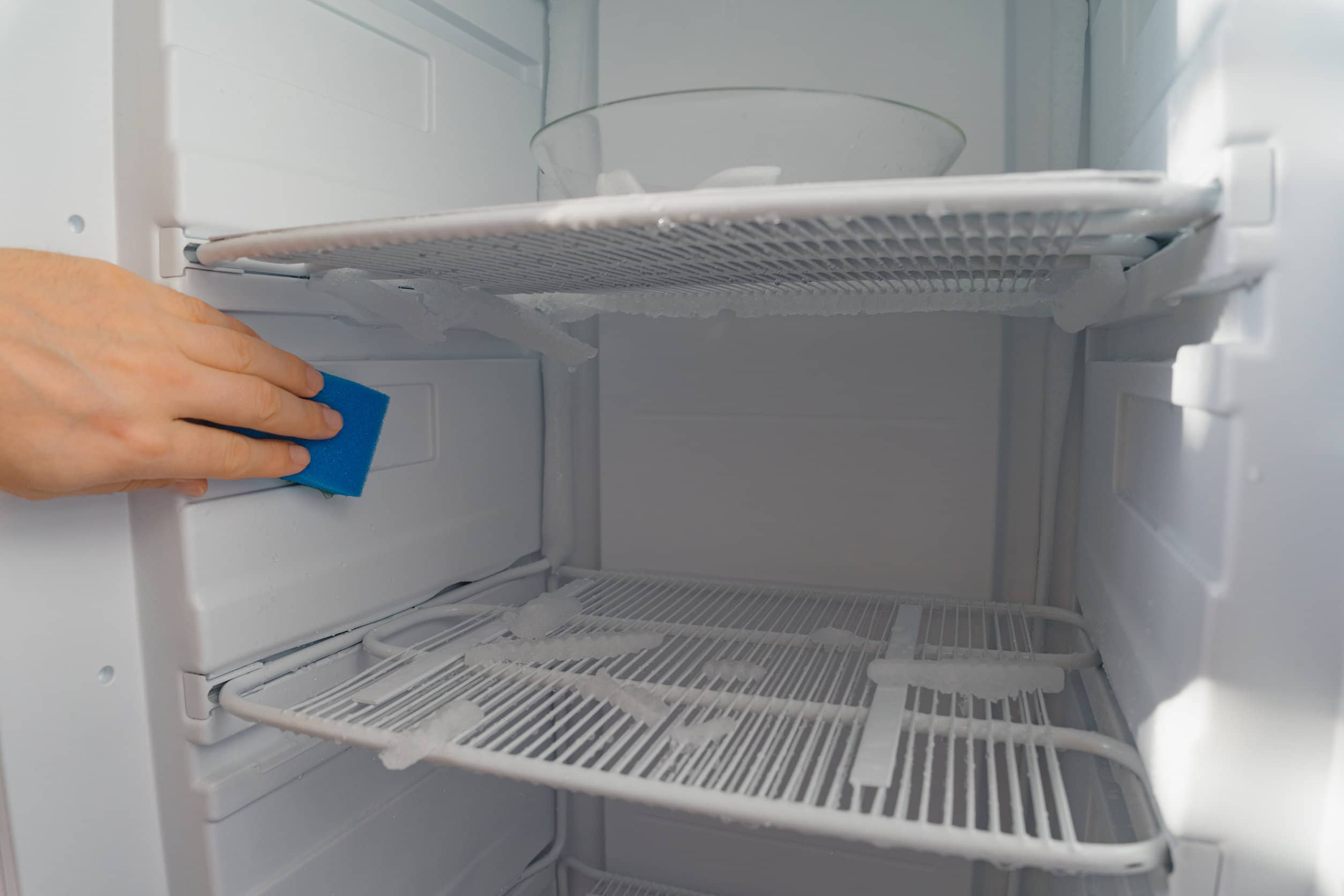
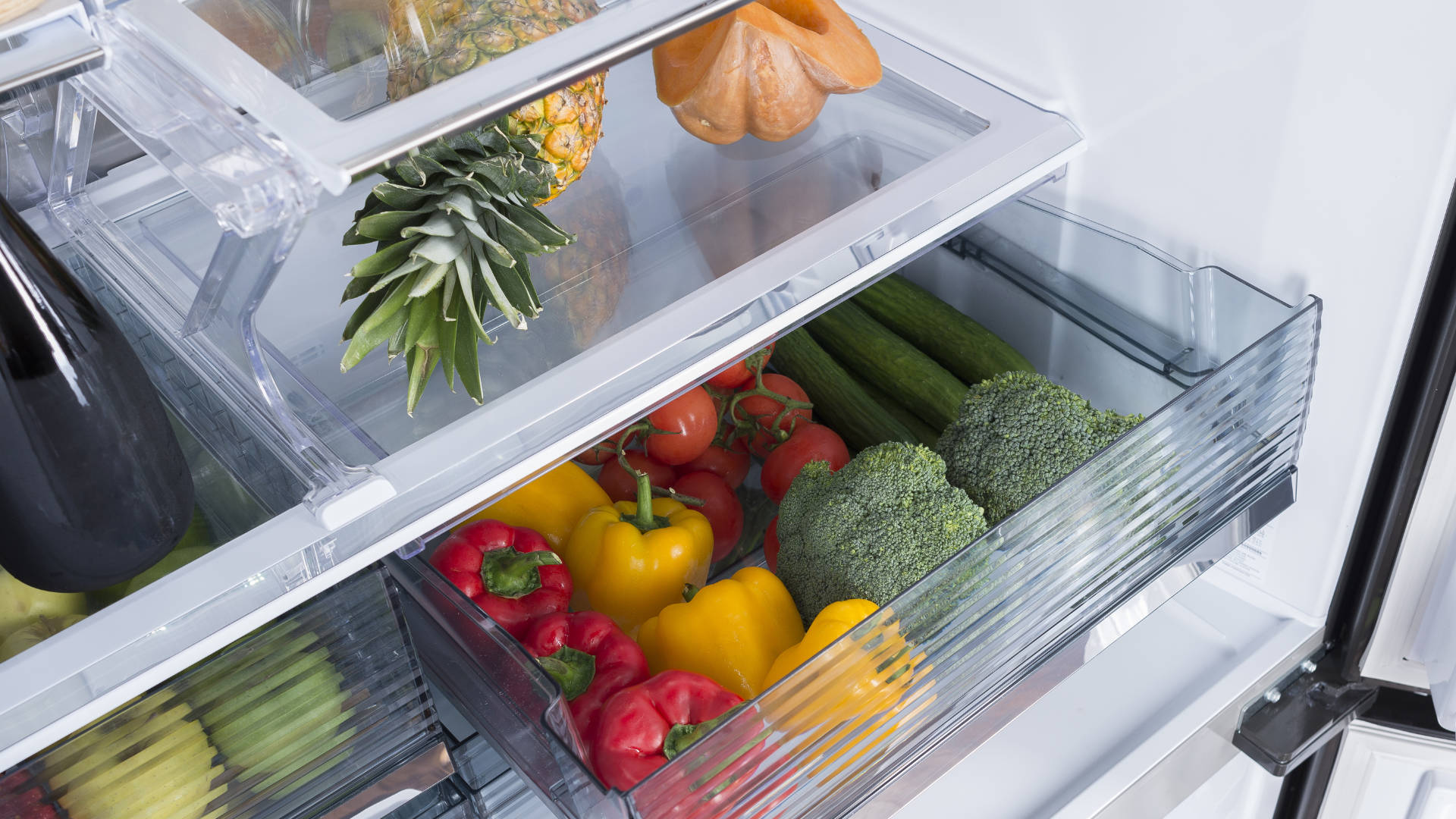
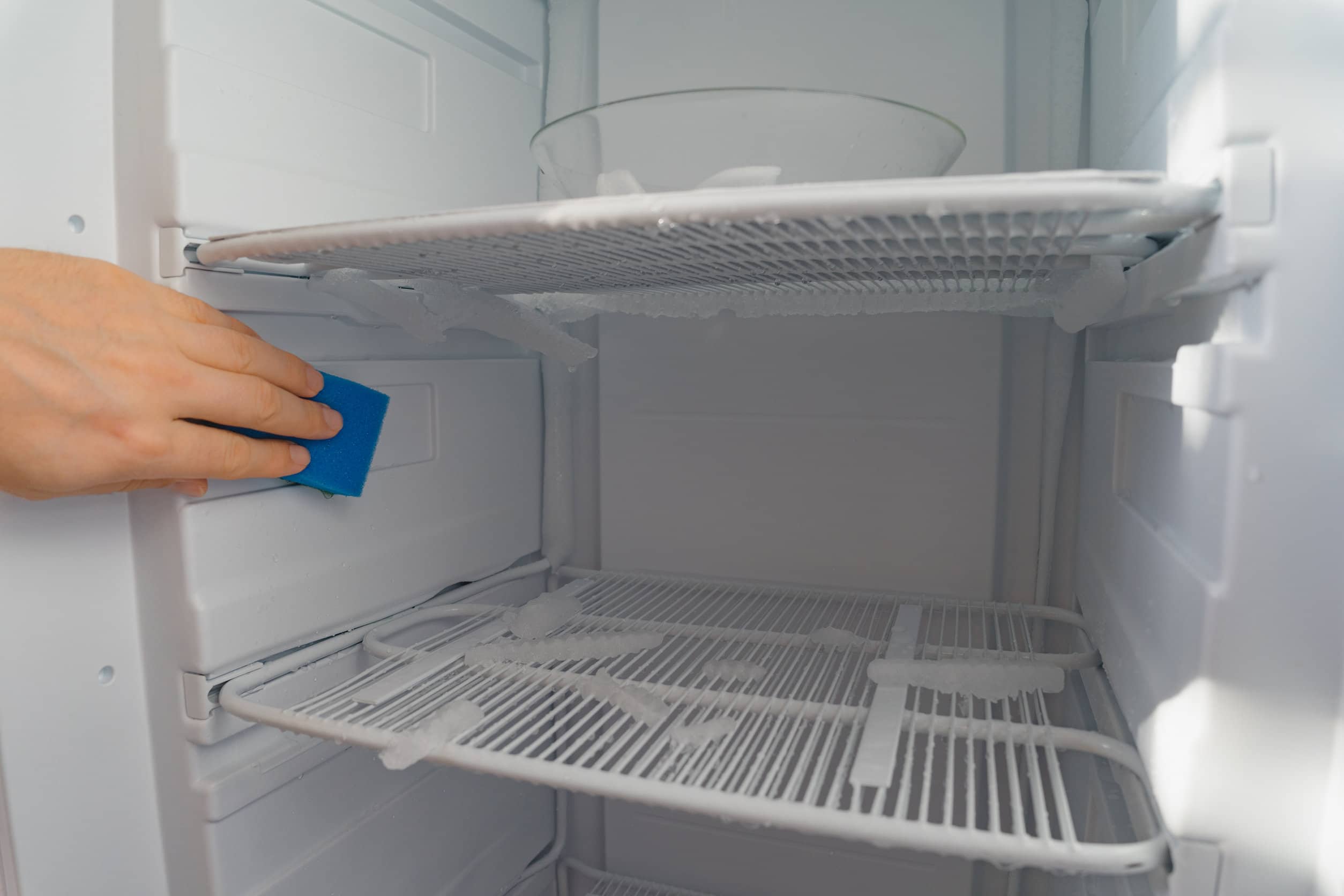
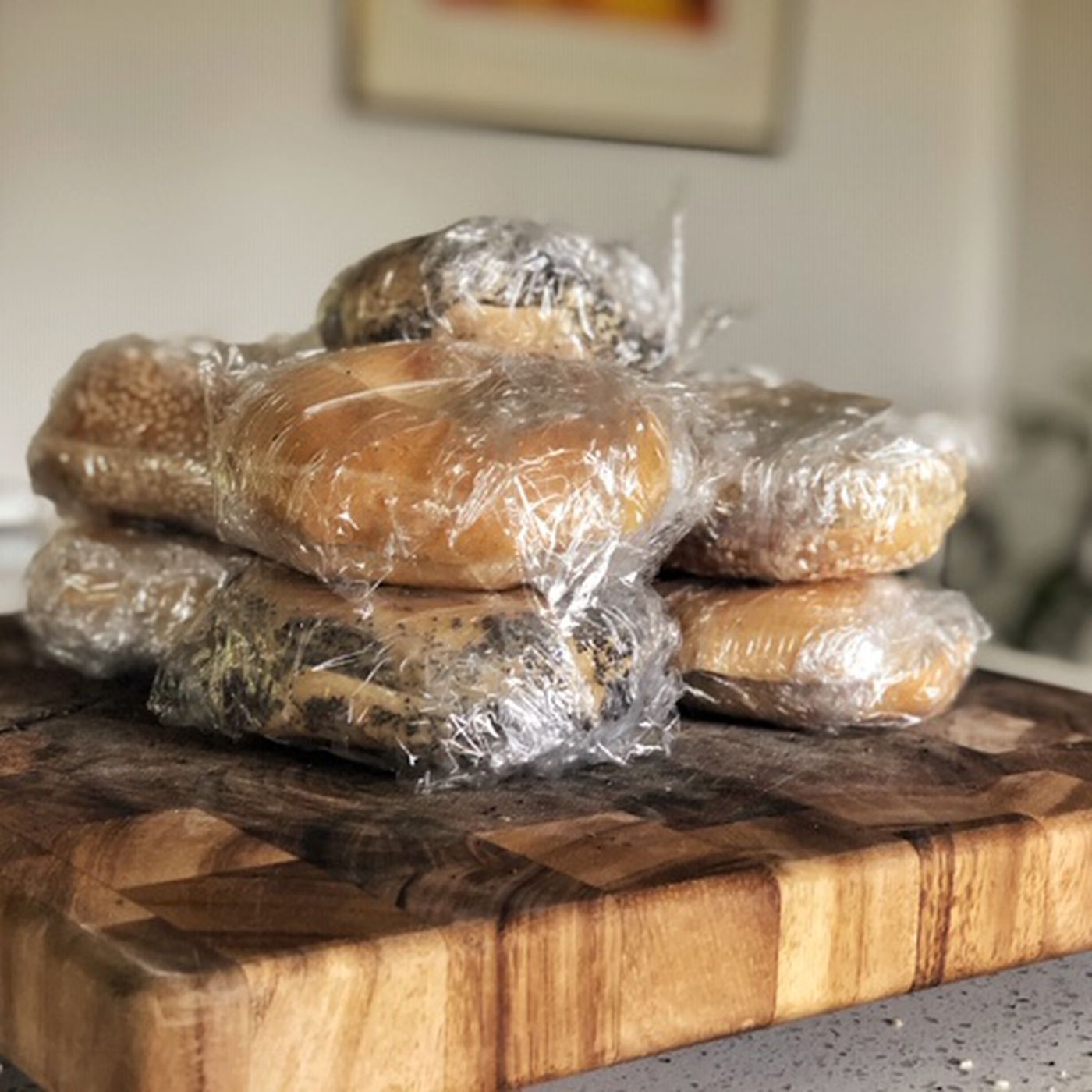
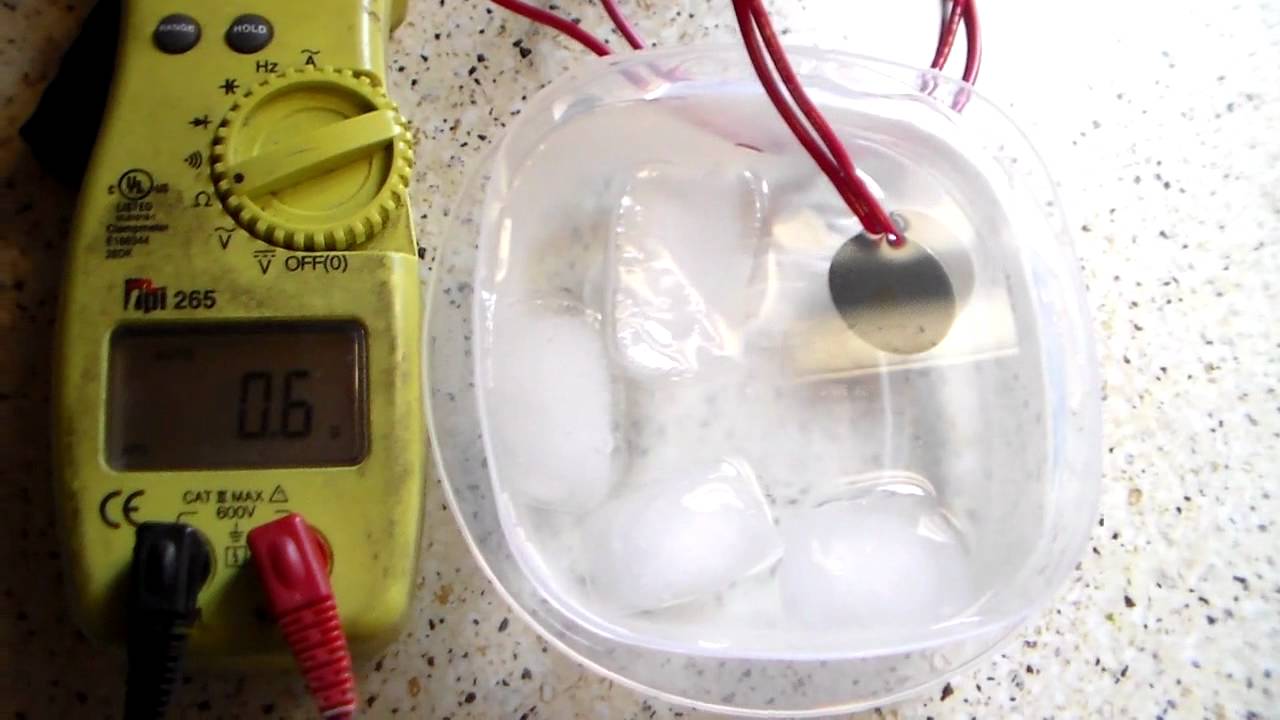

0 thoughts on “How To Defrost Bread From Freezer”